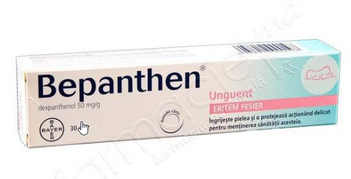Бесплатная доставка для всех заказов свыше €100
Diaper rash in children

Diaper rash in children
Diaper rash (diaper dermatitis) causes red and sore bumps. The cause of nappy rash is the moist and dense environment that occurs under the nappy. Diaper rash can be prevented with frequent nappy changes and the use of mild grooming products. Allow the skin to air dry before putting on a new nappy.
What is nappy rash?
Diaper rash is red and irritated skin in the diaper area that occurs due to diaper use. About half of all children have had nappy rash by the time they are one and a half years old. Diaper rash is most common in children between 3-6 months. The ailments are usually mild and transient, and disappear in most people with good grooming routines and possible self-treatment. In approximately 5% of children, nappy rash develops into a more severe inflammation of the skin.
Causes of diaper rash
Diaper rash is caused by the skin being enclosed in a dense and moist environment under the nappy. In addition, urine, faeces and mechanical rubbing can worsen the rash. Wet nappies provide a good breeding ground for bacteria that break down urine into ammonia. Ammonia is corrosive to the skin and can damage the skin barrier. This increases the risk of infection with bacteria and fungi.
Several factors can contribute to nappy rash:
Children with dry skin or eczema get nappy rash more easily than children with normal skin
Frequent, loose stools
Excessive use of soap and water
Inadequate cleaning when changing nappies
Diapers that are not changed often enough
Symptoms of diaper rash
Ordinary nappy rash often causes continuous redness and irritation of the skin that is in direct contact with the nappy. Infection with bacteria and/or fungi will make the rash more patchy and angry, and often the rash also spreads to skin folds and the groin. Other symptoms may be burning and pus-filled blisters or oozing wounds.
Symptoms of diaper rash
Ordinary nappy rash often causes continuous redness and irritation of the skin that is in direct contact with the nappy. Infection with bacteria and/or fungi will make the rash more patchy and angry, and often the rash also spreads to skin folds and the groin. Other symptoms may be burning and pus-filled blisters or oozing wounds.
Good advice for preventing nappy rash
Change diapers often and always after each bowel movement.
Clean the skin well every time. Soft disposable compresses (Vidi) are fine to use. These can be moistened with water or baby oil as needed. If you use soap, you should rinse well with clean, lukewarm water afterwards.
Feel free to let the child lie without a nappy for a while so that the skin can air dry.
Use a good grooming cream before putting on a new nappy.
Choose gentle products intended for children when caring for your child. Soaps with a high pH and strongly perfumed creams can irritate the child's skin and increase the risk of nappy rash.



